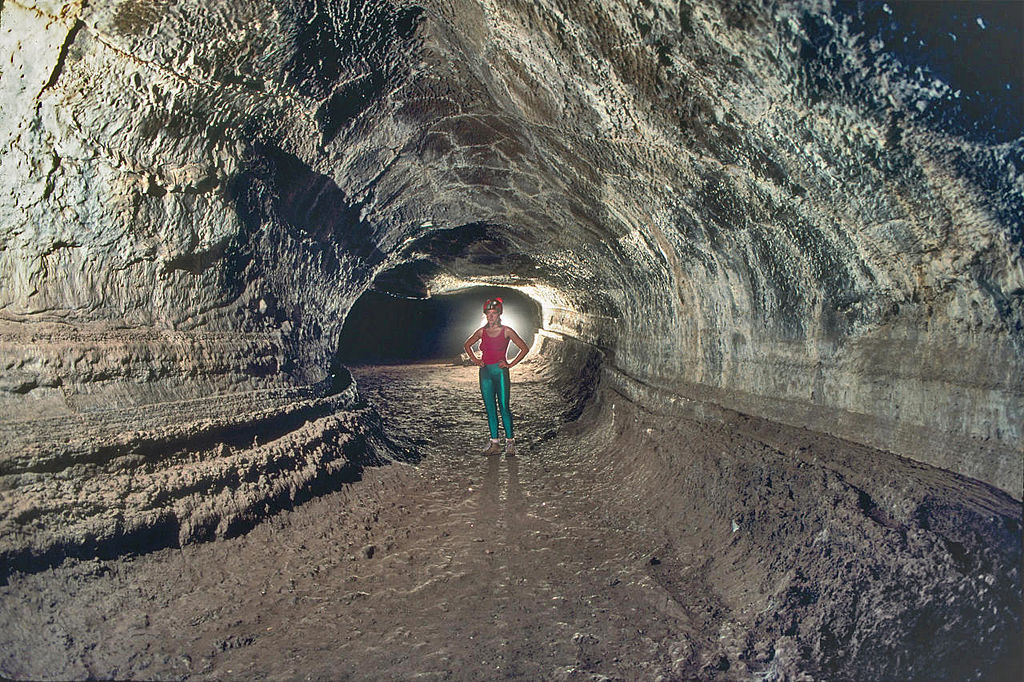Much like the early humans who found shelter in caves, the first human communities on the Moon might be established inside underground caverns, which were formed billions of years ago by ancient rivers of molten lava.
Hollow underground chambers on the Moon up to 5 km-wide would be large enough to house a colony bigger than the central business district of Sydney.
Lava tubes, which exist on Earth in places like Hawaii and New Zealand, are suspected to exist on the Moon. They form when the upper layer of lava flowing from a volcano begins to cool and harden. As it does so, it insulates the liquid molten lava below, which continues flowing.
The lava eventually drains and leaves hollow tube-like chambers, which can extend for several kilometres or more, and can also branch out into complex labyrinths.

Scientists have previously proposed the idea of establishing lunar colonies inside lava tubes. And now, a research team from Purdue University in the US has modelled the stability of these theoretical caverns, accounting for different widths, roof shapes and roof thickness.
They found that tubes 1 km-wide or larger would be structurally sound and could - in theory - protect human settlers from the harsh lunar environment. This includes shielding residents from exposure to dangerous levels of cosmic and solar radiation, dramatic temperature swings from above boiling to way below freezing, and frequent asteroid bombardment.
"It's the first modern re-assessment of how stable these can be," lead investigator and graduate student, David Blair, told BBC News.
"We found that if lunar lava tubes existed with a strong arched shape like those on Earth, they would be stable at sizes up to 5,000 metres, or several miles wide, on the Moon," Blair added in a press release.
"This wouldn't be possible on Earth, but gravity is much lower on the Moon and lunar rock doesn't have to withstand the same weathering and erosion. In theory, huge lava tubes – big enough to easily house a city – could be structurally sound on the Moon."
 Cross section of a theoretical lunar lava tube with the city of Philadelphia for scale (Credit: Purdue University)
Cross section of a theoretical lunar lava tube with the city of Philadelphia for scale (Credit: Purdue University)
As David Szondy from Gizmag explains:
"[the] tunnels would, of course be airless, but they would be well protected, with a stable temperature of -20° C (-4° F), so with proper pressurisation and moderate heating they could be made habitable. Another advantage is that since the lava tubes would be located by the highlands, they'd be well located for mining operations as well as landing areas in the flat maria."
The team's findings were presented at the 46th Lunar and Planetary Science Conference (LPSC) in Texas.
Back in the 1960s, before the first lunar landing, scientists proposed the existence of extensive tunnel networks on the Moon, after orbital photographs revealed hundreds of long, narrow channels called rilles winding across the vast lunar plains.
In 2009, Japan's Kaguya spacecraft photographed enormous black openings, hundreds of feet deep, which could seem to lend support to the existence of these extensive tunnels. After NASA's Lunar Reconnaissance Orbiter photographed the caverns a year later, the craft's principal investigator, Mark Robinson from Arizona State University, said "they could be entrances to a geologic wonderland."
"We believe the giant holes are skylights that formed when the ceilings of underground lava tubes collapsed," he added.
Maybe one day, after the first settlers have arrived and established their new cave-dwellings, we'll be able to visit them aboard a new space elevator.
